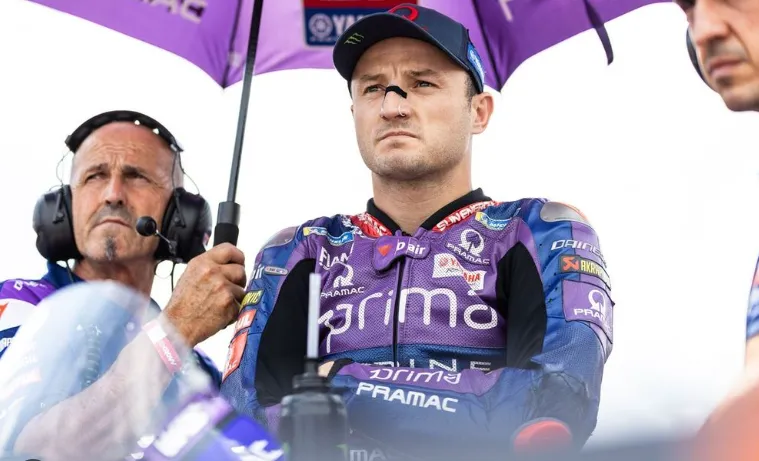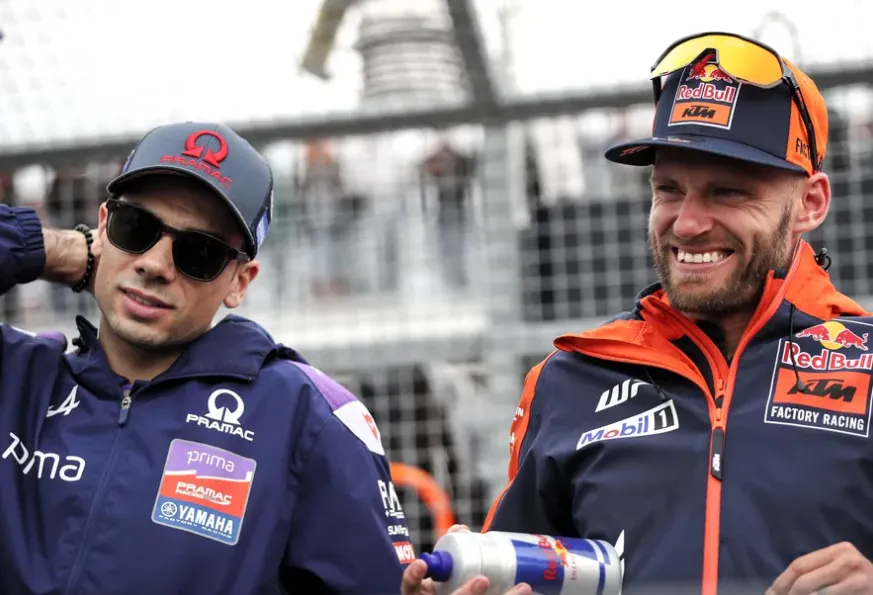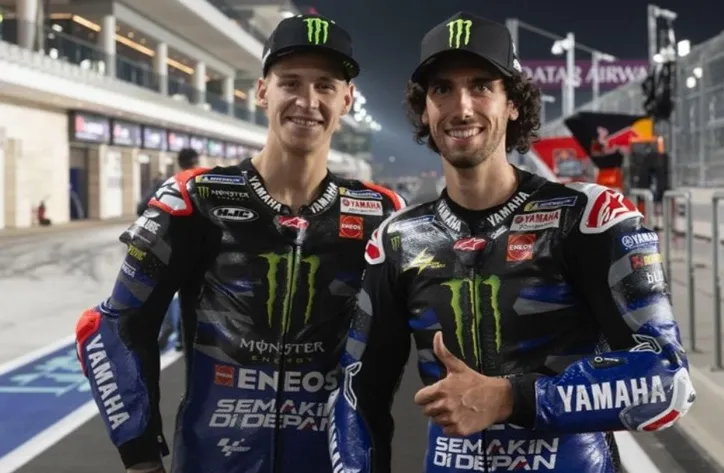
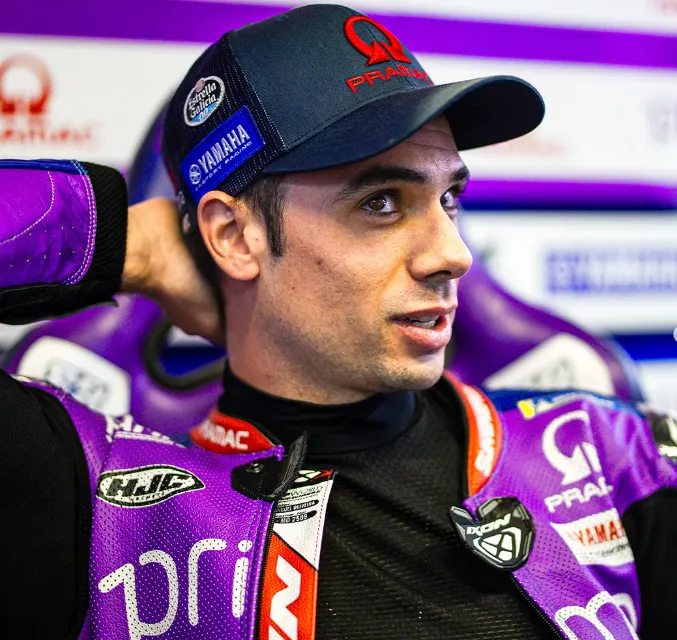
Miguel Oliveira Explains Strategy at Assen: Why Did He Say No to Soft Tires?
Miguel Oliveira had a tough day at the office during Friday’s free practice session at the Dutch Grand Prix in Assen. The Prima Pramac Yamaha rider finished the session in 14th position, and while the timesheet might not reflect it, Oliveira had to navigate a minefield of red flags, unpredictable tyres, and unrelenting interruptions.
The Portuguese rider opened up after the session, offering valuable insight into the strategic decisions he made in the garage, the technical issues with Michelin’s medium front tyre, and how his approach echoed that of Pecco Bagnaia, who has also been experimenting with time management and tire preservation strategies.
Assen Practice Disrupted: Oliveira Calls It a “Never Ending” Session
Oliveira didn’t mince words when describing how the multiple red flags and stoppages completely disrupted his rhythm and timing on track.
“Yeah, a never-ending session,” he said. “With the second red flag I was looking at the clock—4 in the afternoon—and there were still 15 minutes to end the session, and I’m like ‘Ohhh’.”
His visible frustration wasn’t just about the lost time; it was about the loss of momentum, especially when riders are trying to dial in settings for qualifying and sprint preparation. As Assen’s Friday session stretched far beyond the usual time slot, riders were left juggling physical preparation, tyre management, and timing strategy.
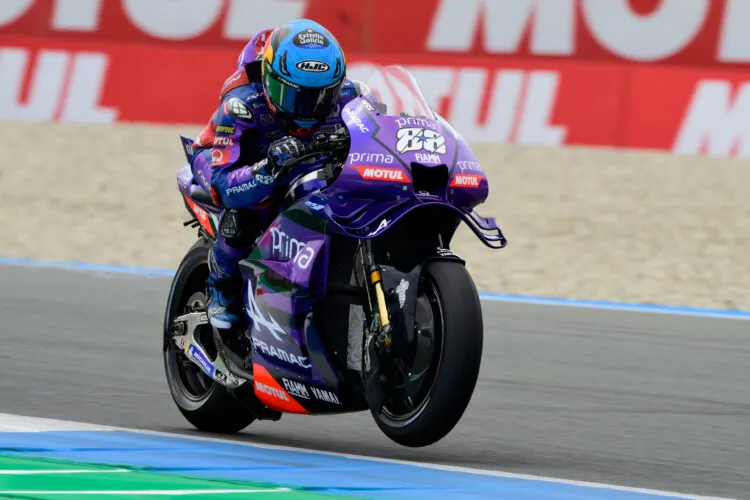
Medium Front Tyre Woes: A Critical Problem for Oliveira and the Field
Oliveira pinpointed a key technical issue that defined not only his performance but also much of the field’s: the unpredictability of the medium front tyre. With low temperatures at the Assen circuit, Michelin’s medium compound failed to live up to expectations.
“It was super, super strange in the beginning,” he explained. “Everyone was expecting the medium tyre to be kind of normal… but I guess we couldn’t bring it up to temperature.”
The failure to heat the front medium compound properly led to a range of handling problems. Riders across the grid complained of instability, especially under heavy braking and in quick direction changes. Oliveira described the sensation of front-end folding—a terrifying issue for any MotoGP rider relying on precise front grip to execute lean angles at high speed.
Quartararo and Oliveira Agree: Cold Weather to Blame for Crashes
Fabio Quartararo, who topped the session, also mentioned the track temperature as a factor contributing to the unusually high number of crashes—nine in total, including severe incidents involving Ai Ogura, Lorenzo Savadori, and a double crash day for Marc Marquez.
“The temperature was low and that’s why there were so many crashes on the medium tyre,” Quartararo explained.
Oliveira echoed this sentiment and added that even when the tyre reached its temperature operating range, its behavior remained “quite unpredictable.”
A Conservative but Calculated Strategy: Oliveira Mirrors Bagnaia
Faced with this uncertainty, Miguel Oliveira made a strategic decision that might have cost him a higher spot on the timing sheet but preserved crucial resources for the rest of the weekend.
“I actually decided to wait ten minutes in the garage to just do the time attacks because I couldn’t afford to use another soft front to ride.”
Oliveira’s decision mirrored the calculated approach taken by Pecco Bagnaia, who also delayed his out-lap to avoid traffic and maximize efficiency during the limited dry window. With Michelin limiting tyre allocations per weekend, Oliveira couldn’t justify using soft tyres in a session he knew wouldn’t deliver consistent laps due to red flags.
The plan was simple but tactical: wait out the chaos, then strike late with a time attack using the soft compound once the session settled.
Resource Management Over Raw Speed
In today’s MotoGP, managing tyre resources is just as important as pure lap speed—especially with the limited front soft tyre availability. Oliveira knew that burning through tyres on a day marred by interruptions would jeopardize his entire weekend strategy.
“We have a chance tomorrow to fit the soft front, so we’ll definitely try to avoid using it more today.”
His foresight suggests a long-term race weekend strategy, not just a reaction to a messy Friday. Oliveira is betting on improving grip levels and warmer temperatures to give him better balance in both Q1 and potentially the Sprint Race.
Oliveira’s Long-Term Vision: Smarter MotoGP Strategy
Beyond the technical explanation, Oliveira’s attitude reflects a mature, methodical rider who is looking at the big picture. While many riders pushed hard in unstable conditions and paid the price, Oliveira chose to sacrifice short-term speed for weekend consistency.
This smart approach is a page out of the book of more seasoned veterans like Andrea Dovizioso or Dani Pedrosa, who often planned around tyre life and race setups more than headline-grabbing lap times.
“I couldn’t afford to use soft tires just to ride,” he said, underlining his focus on tyre longevity and sprint-to-main race balance.
Pramac’s Internal Pressure: Oliveira vs Miller for 2026
Miguel Oliveira’s performance comes at a time when his seat at Pramac Yamaha is under review. With Toprak Razgatlioglu set to join the team in 2026, both Oliveira and teammate Jack Miller are under pressure to deliver results.
Although Oliveira has a two-year contract, it includes a performance clause that could allow Yamaha to move him aside if results don’t improve. With only three championship points heading into Assen, Oliveira is walking a tightrope.
By adopting a strategic and intelligent race weekend plan, he may not just be fighting for results—but for his MotoGP future.
Yamaha’s Wider Struggles: What Oliveira’s Comments Reveal
The tyre unpredictability and constant tweaks reveal a deeper issue: Yamaha is still working to understand the new V4 engine and chassis dynamics. Oliveira, coming from years of experience with KTM and Aprilia, brings valuable insight—but his adaptation to Yamaha’s DNA has been far from seamless.
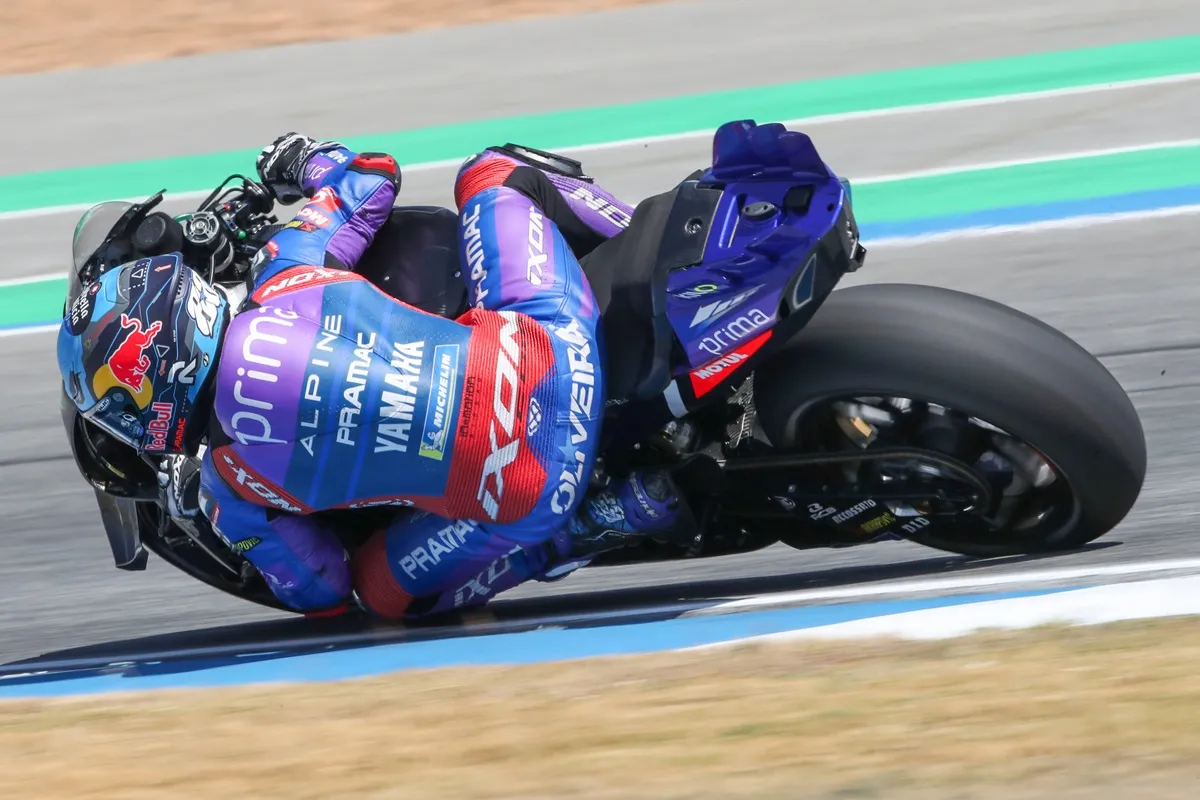
Despite that, his willingness to speak openly about tyre behavior, session planning, and technical feedback demonstrates a rider trying to work with the engineers, not just complain.
“We need different tyre ranges in the future to help riders perform better,” he added in a broader comment on MotoGP’s tyre supplier.
Final Thoughts: Oliveira Chooses Strategy Over Spotlight
In a weekend where crashes dominated the headlines and riders like Fabio Quartararo stole the spotlight, Miguel Oliveira’s story is one of intelligence over instinct. By holding back when others pushed, he ensured that he enters Saturday with critical tyre resources, a calmer mind, and a clearer plan.
Yes, he missed Q2 qualification—but in doing so, he may have laid the groundwork for a better overall race weekend, especially if warmer conditions and rubber buildup help stabilize the front end.
With Q1 looming, Oliveira will need to execute his plan with precision. If he succeeds, his Friday gamble could look like a masterstroke. If not, it will serve as another example of how unpredictable—and brutally unforgiving—modern MotoGP has become.
One thing’s for sure: Miguel Oliveira is not just riding—he’s thinking, and that might be what saves his seat in 2026.








